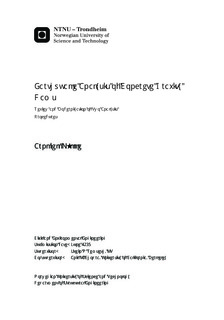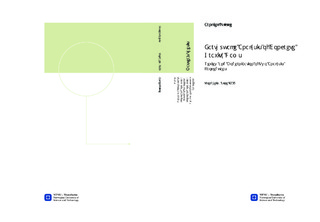| dc.description.abstract | A two-stage procedure has been proposed for the elastic analysis phase of seismic design and safety evaluation of concrete gravity dams: (1) response spectrum analysis (RSA) in which the peak value of response is estimated directly from the earthquake design spectrum; and (2) response history analysis (RHA) of a finite element idealization of the dam monolith. Both analysis procedures include the effects of dam-water foundation interaction, known to be important in the earthquake response of dams.Presented in this thesis are two important developments that have now been added to the computer program EAGD-84, implementing the RHA procedure: (1) a set of Matlab modules ? including an easy-to-use graphical user interface (GUI) ? has been developed, providing users with the capability of pre-processing input and post-processing analysis output from EAGD-84 in the Matlab scripting language; (2) a more complete set of compliance data that govern the interaction between the dam and the foundation region has been incorporated in the program. These developments greatly improve the accessibility and functionality of the EAGD-84 program, and provide users with sufficient control over the overall damping in the dam-water-foundation system to ensure consistency with recent research. The above mentioned RSA procedure has likewise been modernized. A number of enhancements have been made to the procedure, the most significant being: (1) a more complete set of data for the parameters that characterize dam-foundation interaction has been computed and implemented; and (2) to enhance the accuracy of the procedure, a correction factor for computing beam stresses on the downstream face of the dam has been developed. In addition, a comprehensive evaluation of the accuracy of the RSA procedure has been conducted, demonstrating that it estimates stresses close enough to the "exact" results (determined by RHA) to be satisfactory for the preliminary phase in the design of new dams and in the safety evaluation of existing dams. The accuracy achieved by the procedure is noteworthy, especially considering the complicated effects of dam-water-foundation interaction and reservoir bottom absorption on the dynamics of the system, and the number of approximations necessary to develop the procedure. The updated version of the computer program EAGD-84, the new Matlab modules and the GUI, as well as a new report presenting the updated RSA procedure, have all been made publicly available through the Pacific Earthquake Engineering Research (PEER) Center. | nb_NO |

